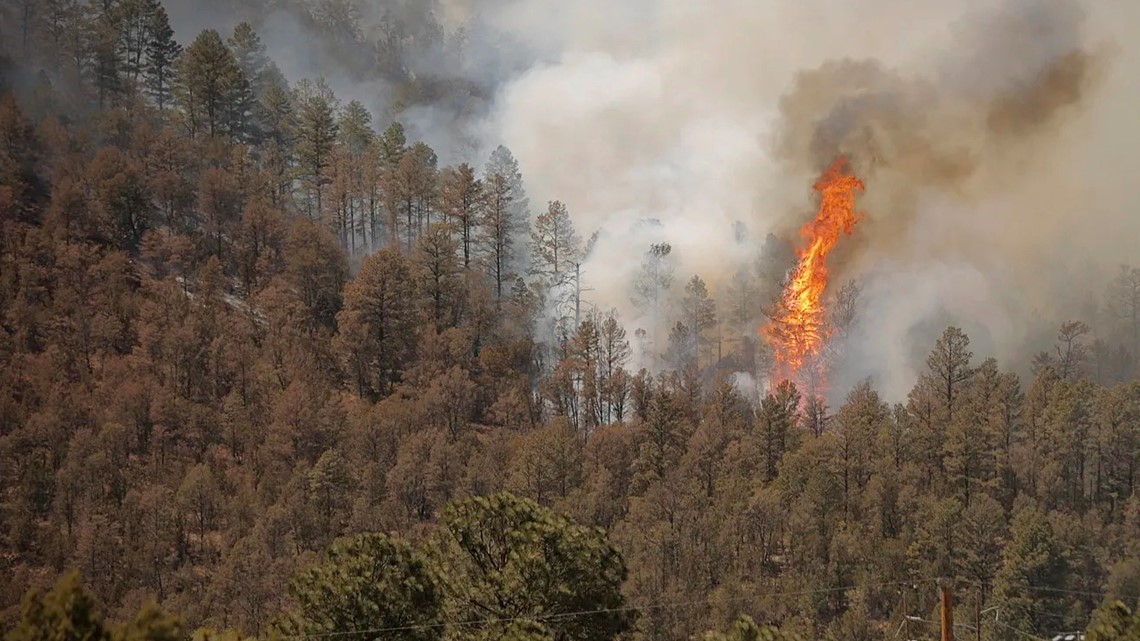I am a pothole—an ordinary road hazard and a bane to all who drive. Messing with you and your vehicles is my vocation; it’s what I do.
My genealogy is compelling enough. I come from a common road-built with dirt, six to twelve inches of #2 gravel and #57 gravel with lime dust—which is compacted at each stage. Then, add an inch or two of asphalt base, before a layer of finishing asphalt to complete the work.
But over time, roads wear out. If the road is not well-constructed, trouble comes quicker. Without inspections, developers have an incentive to skimp on long-term road quality—and may succumb to this temptation. Even with the best roads, the ground can shift, especially if built on sand, and the weight of traffic inevitably takes a toll. But most of us potholes start with moisture, especially ice. Road salt is a mixed blessing: it’s tough on the roads, but it reduces the damage to roads from moisture and ice.
One vulnerable area is the asphalt seam or “crown”—the peak of the road that allows water to drain off. Sometimes, the edge of a road lacks a solid foundation. And the driving lanes of a road receive the most weight. So, I can show up anywhere. Street departments try to prevent me through road maintenance—for example, “crack sealing” using hot rubberized asphalt and polymers. Those stripes may not look pretty, but they prevent me from showing up.
“Because I’m small and local, I seem simple to fix, but I’m not. Given this, imagine how difficult it is to fix large, national, complex problems.”
All that said, at the end of the day, I’m only a hole in the ground. The more fascinating story is about the efforts to fix me and my friends. It is more of a mystery than you might expect. Sadly, people overlook this—and then, miss the larger lesson: Because I’m small and local, I seem simple to fix, but I’m not. Given this, imagine how difficult it is to fix large, national, complex problems. Me and my story may seem mundane. But as the clever and wise G. K. Chesterton once observed, “There are no uninteresting things, only uninterested people.”
I, Pothole, simple as I may appear, merit your wonder and awe—a claim I will explain. In fact, if you can understand me and efforts to fix me—no, that’s too grand to ask—if you can become aware of the miracles that this represents, you will have less faith in the efficacy of government activism and be able to promote the freedom and prosperity that are under attack today.
I have a profound lesson to teach. And I can teach this lesson better than a pencil or a missile, an elementary school or antitrust enforcement, because fixing me is seemingly so simple. It may be simple, but no single person on earth knows how to do it. This sounds incredible, especially when you realize how many potholes are fixed every year.
As you know from the popular parable of the now-prominent pencil, innumerable people are involved with fixing a pothole. Consider just one aspect of the remedy: my family tree includes asphalt—the production of which requires hundreds of people in an average company. Now contemplate what efforts went into making the places where they work, the clothes they wear, the coffee they drink, the tools, machines, and computers they use. Think of all the cars they drive to get there and of course—don’t overlook the avenues with their potholes. (They also use roads to receive the inputs they use and to transport their final product!) As with the pencil, it’s obvious that no single person knows how to do all the things required to fix a simple problem like me.
But let’s take this discussion down a different road. How does a pothole get fixed? Imagine that you run the relevant department for the local government and are in charge of maintaining the city streets.
The first problem is identifying the location of the potholes. How do you get this information? The most common method is for your workers—and other government workers in the public (e.g., sanitation workers)—to report what they find. You’d love to have more input from your friends and neighbors. But they probably figure that someone else will report a problem. You have a website and a phone number for citizens to report their concerns. (And it’s important for us to keep a good paper trail—to show that you’ve done your due diligence to prevent tort claims!) But the point is clear: finding all the potholes is easier said than done.
Second, you need to prioritize which potholes to fix first. How many people are affected by the pothole? What is the severity of the damage and danger caused by each pothole? Your top priority is preventing car damage (and avoiding lawsuits). So, more severe potholes are highest on the list. But it’s also important to deal with higher traffic areas where potholes can get worse more quickly. For lower-priority jobs, it’s first come, first serve.
Another complication is “pothole season.” In the late winter, you have many more potholes, making those decisions even more challenging. And ironically, potholes are more difficult to fix in the winter, since you need the ground to be above freezing. You can use a “cold patch,” which can be done even when it’s freezing or wet, but it’s a costlier option. You can also use a propane torch to dry out and warm up a pothole, but that’s costly too.
When you’re not in pothole season, you can use more time and resources for road maintenance. And if there aren’t enough potholes to fix on a given day, it may not be cost-effective in terms of asphalt, machine usage, machine rental, and so on. It’s important that you achieve economies of scale to be relatively efficient.
When should you fix them—with implications for disrupting traffic and imposing on workers: during the day or at night, on weekdays or weekends? For example, it’s not smart to fix potholes in front of the courthouse during the week. It’s better to do this at night or on the weekends.
Third, to fix the potholes, which skills are required (or at least useful) in your employees? The skill level of workers may seem unimpressive, but you need them to be able to do many jobs, since your work varies throughout the year. Your workers may do three or four different types of jobs in a day and you cross-train them to be effective at a handful of tasks. So, you want them to be able to learn quickly and to be self-motivated. Beyond that, not just any worker will do. For safety reasons, they must be diligent and detail-oriented. Since some manual labor is involved, they must be willing to get their hands dirty—and ideally, they’re good with tools and machines.
How many workers do you need? A small “cold patch” is a one-worker job—pouring the mix into the hole and smoothing it out. But most jobs are for two (or more) workers. At the least, you usually need one (or more) to fix me and one to deal with traffic. Larger jobs could still be done by one person, but safety concerns and greater accountability usually mean that it’s better to have two on the job.
Fourth, what materials will you use to fix the potholes? What sort of machines and tools would be helpful? What is the rate of depreciation, maintenance, and breakage in those tools and machines? For tools, you need trucks and “hot boxes” (small trailers to keep the asphalt within a certain temperature range), tampers (hand and gas), asphalt rakes, shovels, heavy brooms, blowers, an air compressor (to dry out narrow fissures), Rosebud heating nozzles, propane torches, skid steers (e.g., Bobcats), rollers with a milling head attachment.
For materials, you need asphalt and “binder” (which binds the new asphalt to the existing road materials). When temperature is an issue or you need a quick fix, you also have “hot patch” and “cold patch” options. (It’s perhaps surprising that it’s easier to have a more effective fix for deeper potholes, since there’s more surface area for the binder to attach.)
All of this assumes a modest pothole. If there is a problem with the foundation of the road, you’ll need to remove the asphalt and the flawed foundation, cutting and replacing the section as necessary—to deal with the root causes. In this, you’re a lot like a dentist. (And don’t forget: if you’re going deeper, be careful not to hit a gas main, electrical wires, or a water pipe!)
Fifth, what are the prices of the inputs to production: the labor of various skills, the capital of various types, and other inputs? How do you balance your budget, trying to maximize social well-being within the revenues you have been granted by the government? There are so many factors to weigh as you maximize road quality while watching costs.
Sixth, how are the above answers changed by differences in climate? (Arizona is not the same as Vermont.) Not much, except for differences in temperature and precipitation, variance in the quality of road construction, and various state regulations. What about weather? Aside from cold patches and hot patches, potholes can’t be fixed when the ground is wet or freezing. Underlying road conditions are relevant. And as we’ve seen, there are some important trade-offs between short-run fixes, long-run fixes, and cost.
Seventh, when can the private sector provide better quality and/or lower cost? Maybe you shouldn’t be fixing potholes at all—or maybe you should fix some types of potholes and outsource the others. You’re likely to privatize bigger jobs for paving, potholes, striping, engineering services. You simply cannot achieve the economies of scale to be as efficient. Sometimes, you can handle the job, but it doesn’t make sense for some smaller cities to own paving machines. Renting is smarter given that the work is seasonal and the machine is expensive and high maintenance.
And finally, what role does technological advance and changing market conditions have in changing all of the above? Even if I understand the world of potholes perfectly today, my understanding will become increasingly obsolete, soon enough.
Although millions of people have a hand in fixing me, none of them know more than a small bit of what is required. This “knowledge problem” is a key facet in the field of Austrian Economics. In the context of markets, we have innumerable, subjective, and diffuse bits of information embedded in the preferences of consumers (often modeled as demand curves). We have the wide array of variables that face producers—the prices of output and inputs, technology, incentivizing workers, etc. (often modeled as supply curves). And these two cooperate in markets through the challenges (and transaction costs) of communication and transport.
To credit Leonard Read’s classic example, “I, Pencil,” it’s amazing that there are usually about the right number of yellow #2 pencils in boxes of ten on the shelf of the local box retailer in February and in August.
Thankfully, the person running the Street Department can be successful because the pothole problem is relatively simple in terms of the knowledge required. While the list of questions above is daunting, it is manageable for someone who gains expertise in such things. It may not be done well, but it can be done well—with sufficient experience, managerial skill, wisdom, and knowledge.
What about more complicated matters—for example, a national health care system. What do government bureaucrats need to know to effectively run everything from allergy shots to cancer, from routine check-ups to Medicare, from cheap prescriptions to innovative research, from the rural poverty of Appalachia to the elites on the coasts? Well, we don’t have nearly enough time to get into all of that. But the point is clear enough: the “knowledge problem” is staggering for more complex matters and as we extend from local to state to federal governance.
Another concern is the question of motives and how they play out in different contexts. In the context of the market for asphalt, it’s astounding that few of those involved—the worker in the oil field and the person who produces the coffee he drinks, the salesperson and the clerical staff, the CEO and the janitor—perform their tasks to please people per se. Their motivations are mixed—from putting food on their table to buying a boat, from sleeping well at night to impressing their friends. A competitive market harnesses these motives to get people to serve customers (and society) effectively.
For more on these topics, see
In political markets, these concerns are generally greater. It’s certainly possible that the primary aim of the bureaucrat is maximizing social well-being. Even if not, it’s possible that political pressures will curtail deviations from the ideal. But it’s also possible that we’ll see cronyism and graft, inefficiency and red tape, budget-maximization and over-spending. Of course, these worries are exacerbated by the high level of monopoly power in most government endeavors.
The lesson I have to teach is this: Even when government is a constitutional, ethical, and practical means to some end—on paper—be wary of the knowledge problem and the motives question for politicians and bureaucrats. In contrast to the foibles of political markets, have more faith that free people will respond favorably to the Invisible Hand of economic markets. I, Pothole—though seemingly simple—offer the miracle of my maintenance as testimony that this is a practical faith—as practical as the sun, the rain, and the roads.















